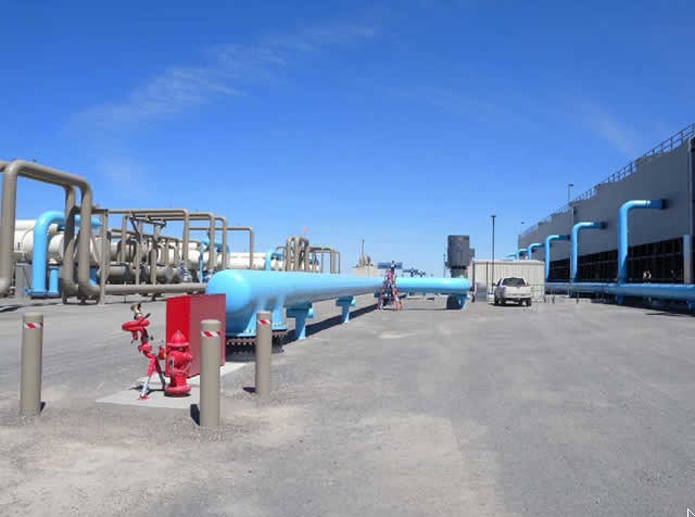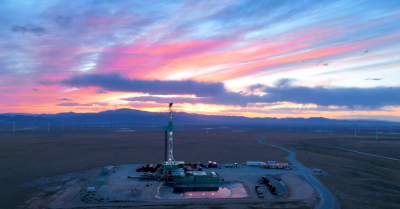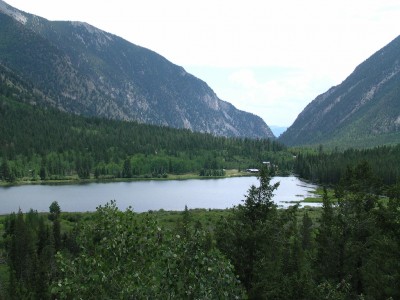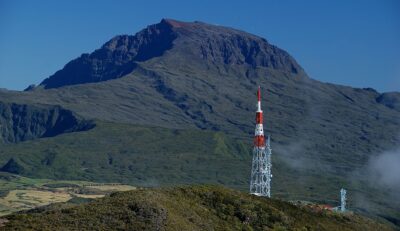DOE remains confident in the Blue Mountain geothermal plant in Nevada
Following a series of articles raising concerns about the Blue Mountain geothermal power plant project by Nevada Geothermal Power, DOE now says it maintains confident in the plant and its given loan guarantee.
Under increased attention to federal support of renewable energy projects after the collapse of solar company Solyndra, other companies are now being looked at quite closely, including Nevada Geothermal Power and its current financial struggle.
While the company is being thrown in the same boat as Solyndra, the overall situation is quite different. Geothermal energy is a local resource and federal support in the form of incentives, or in the case of Nevada Geothermal Power a loan guarantee, helps to develop projects on the ground in the United States. This creates jobs locally and provides a reliable, renewable, long-term source of power to the western United States. Clearly not the same as trying to compete on the manufacturing side with countries like China in the race to manufacture and sell solar panels. This is something that articles like the one in the New York Times are missing.
The Department of Energy now confirms that it “maintains the future is sound for the Northern Nevada geothermal power plant that it backed with a loan guarantee, officials said Monday.”
The Blue Mountain plant in Humboldt County is expected to generate enough revenue over the next 20 years to cover a $93 million loan from John Hancock Life Insurance Co., of which $79 million was guaranteed by the government, a DOE spokesman said.
“While the plant didn’t initially generate as much power as the operators had hoped, it is generating more than enough clean, renewable power to repay its loan,” said Damien LaVera, a DOE spokesman.
Less certain is the fate of Blue Mountain’s parent company, Vancouver-based Nevada Geothermal Power, which is looking to restructure another loan, $91.3 million borrowed from EIG Global Energy Partners, for the Humboldt County plant.
The company recently released its 2011 fiscal year report in which its accountants warned that the company would not be able to service the loan, casting “significant doubt” on its future.
The company’s troubles were detailed in a New York Times story on Sunday.
Paul Mitchell, a spokesman for the company, said Monday that it is in negotiations with EIG to restructure the loan. He said he was hopeful a deal can be reached so that Nevada Geothermal continues to operate the facility about 22 miles west of Winnemucca.
“EIG is an investment company. I don’t think they have any interest in running a power plant,” he said.
Mitchell said that there are also efforts to improve Blue Mountain so that it will generate more power — and revenues.
It now produces enough energy to power about 35,000 homes. Executives would like to get that figure closer to 40,000.
Blue Mountain generated $24.8 million in gross revenues in the 2011 fiscal year for an operating profit of $6.9 million. Debt interest, however, cost $20.3 million, according to the company report.
LaVera said that DOE is monitoring the project closely but was confident that taxpayer dollars are well-protected.
“The power plant cannot be used as collateral for any other debt. What matters is that the power generated by the Blue Mountain plant — and the revenue generated under its long-term guaranteed sales contract — will be enough to repay the loan,” LaVera said.”
All the discussions now about a “politically well connected” start-up and the likes are clearly painting a wrong picture of the currently struggling geothermal energy industry in the U.S. The industry has not seen the same support as other renewables, despite its great potential providing much needed base-load renewable power to the U.S. Incentives, such as tax credits and more are only a margin of what other energy types have received in the past. So to throw things together like the articles in the New York Times simply don´t give the right picture, nor are they fair for that matter.
Source: New York Times, Las Vegas Review-Journal


















